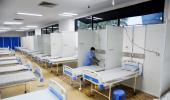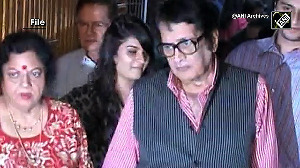With several countries reporting monkeypox cases, the Union health ministry has advised all states to direct hospitals to watch out for symptomatic patients who have travelled to these countries recently and isolate them at designated healthcare facilities.

According to sources, so far only one traveller from Canada having symptoms of monkeypox infection had been isolated.
However, samples collected from the passenger turned out negative for the infection following test conducted at the National Institute of Virology in Pune.
They refrained from divulging the name of the airport where the passenger had landed.
The ministry recently had asked health officials at airports and ports to step up surveillance and isolate symptomatic travellers from monkeypox-affected countries and send their samples to the NIV for investigation.
"The incubation period is usually 7-14 days but can range from 5-21 days and during that time there are mostly no symptoms. The aim is to detect those persons who were missed during the screening at the airport due to lack of symptoms at health facilities after they manifest the symptoms," an official explained.
Monkeypox cases have been reported from Britain, Italy, Portugal, Spain, Canada and the US, among others.
The health ministry, in collaboration with the Indian Council of Medical Research and the National Centre for Disease Control, is framing comprehensive guidelines for the treatment and prevention of monkeypox.
In the interim advisory to all states and union territories recently, the ministry said that health facilities should keep heightened suspicion on people who "present with an otherwise unexplained rash and who have travelled, in the last 21 days, to a country that has recently had confirmed or suspected cases of monkeypox or report contact with a person or people with confirmed or suspected monkeypox."
All suspected cases should be reported to the District Surveillance Officer of the Integrated Disease Surveillance Programme.
The advisory recommends sending laboratory samples consisting of fluid from vesicles, blood, sputum, etc. to the NIV in Pune for monkeypox testing in case of suspicion.
In case a positive case is detected, contact tracing has to be initiated immediately to identify the contacts of the patient in the last 21 days, the advisory stated.
According to the advisory, monkeypox can be transmitted from animal to humans as well as human to human. The virus enters the body through broken skin (even if not visible), respiratory tract, or the mucous membranes (eyes, nose, or mouth).
Human-to-human transmission is thought to occur primarily through large respiratory droplets generally requiring a prolonged close contact.
It can also be transmitted through direct contact with body fluids or lesion material, and indirect contact with lesion material, such as through contaminated clothing or linens of an infected person.
The clinical presentation of monkeypox resembles that of smallpox, a related orthopoxvirus infection which was declared eradicated worldwide in 1980.
Monkeypox is less contagious than smallpox and causes less severe illness.











 © 2025
© 2025